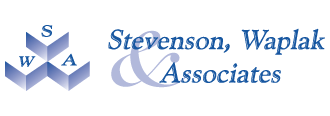Attention Deficit Hyperactivity Disorder (ADHD): Definition
ADHD refers to a family of related chronic neurobiological disorders that interfere with an individual’s capacity to regulate activity level (hyperactivity), inhibit behavior (impulsivity), and attend to tasks (inattention) in developmentally appropriate ways.
The core symptoms of ADHD include an inability to sustain attention and concentration, developmentally inappropriate levels of activity, distractibility, and impulsivity. Children with ADHD have functional impairment across multiple settings including home, school, and peer relationships.
Attention Deficit Hyperactivity Disorder (ADHD): Common Signs
ADHD refers to a family of related chronic neurobiological disorders that interfere with an individual’s capacity to regulate activity level (hyperactivity), inhibit behavior (impulsivity), and attend to tasks (inattention) in developmentally appropriate ways.
- Inattentive Symptoms
- Often fails to give close attention to details or makes careless mistakes in schoolwork, work, or other activities
- Often has difficulty sustaining attention in tasks or play activities
- Often does not seem to listen when spoken to directly
- Often does not follow through on instructions and fails to finish schoolwork, chores, or duties in the work place
- Often has difficulty organizing tasks or activities
- Often avoids or is reluctant to engage in tasks that require sustained mental effort
- Often loses things necessary for tasks or activities
- Is often easily distracted by extraneous stimuli
- Is often forgetful in daily activities
- Hyperactive/Impulsive Symptoms
- Often fidgets with hands or squirms in seat
- Often leaves seat in classroom or in other situations in which remaining seated is expected
- Often runs about or climbs excessively in which it is inappropriate
- Often has difficulty playing or engaging in leisure activities quietly
- Is often “on the go” or often acts as if “driven by a motor”
- Often talks excessively
- Often blurts out answers before questions have been completed
- Often has difficulty waiting turn
- Often interrupts or intrudes on others (butts into conversations or games)
Attention Deficit Hyperactivity Disorder (ADHD): Treatment
Attention Deficit Hyperactivity Disorder affects each client differently and there are several different treatment methods; therefore, each client’s treatment will be different.
- Medication:
- There are several different types of medication that can help to control ADHD. Some medicines used to assist ADHD are called psycho stimulants. Some of the more common medications are: Concerta, Ritalin, Dexedrine, and Adderall. Although these medicines have a stimulating effect in most people, they have a calming effect in children and adults who have ADHD.
- Psychotherapy:
- The treatment of ADHD through different types of Psychotherapy can always be of benefit, not only to the client, but also to the family living with the client. Family counseling keeps parents informed and also shows them ways they can work with the client at home. Communication and interpersonal relationships within the family can be supported and increased with this type of therapy. Individual counseling helps clients with ADHD to better understand their behavior and to learn coping skills.
- Lifestyle Modification:
- Establish rules, routines, and schedules for the home to provide general structure.
- Plan specific scheduling and routines with your child for everyday tasks.
- Establish consequences.
- Organize your child’s room so things are easy to find and easy to put away.
- Utilize a quite space for doing homework.
- Use calendars and give each family member a different color.
- Restrict TV use while trying to accomplish other tasks.
- Play different types of music in the home to assist in increased productivity.
- Create a space where physical activity is accepted in the home and make sure enough time gets spent outside doing such physical activities.
- Purchase items that your child can construct and destruct with their hands.
- School/Academic Modifications:
- Have your child sit in the front of the class.
- Teacher needs to establish good eye contact while talking to child.
- Teacher can use an agreed upon signal for your child to come back to focus.
- Teacher can use certain code words to bring back focus, such as, “Remember this”.
- Long instructions should be avoided and broken into smaller chunks.
- Check and recheck for comprehension.
- Teacher can use the child as a helper to allow them more mobility within the classroom.
- For issues with handwriting, explore the use of a computer, graph paper for math, and possibly carbon copies of class notes from a peer.
- For issues with math problems, explore the use of a calculator and reducing the number of questions required to complete.
